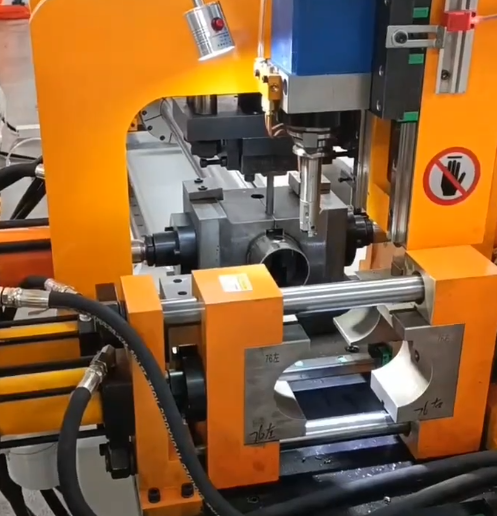In the wave of intelligent and refined transformation of the manufacturing industry, pipe end forming machines have gradually evolved from simple pipe processing equipment into "essential equipment" in multiple fields such as automobiles, aerospace, refrigeration equipment, and furniture manufacturing. The reason why they can break through industry boundaries and be widely adopted is that they accurately solve the pain points of traditional processing, while deeply meeting the diverse needs of modern industry for efficiency, precision, and flexible production, thus becoming a key force in promoting the upgrading of the industrial chain.
Reconstruction efficiency and accuracy benchmarks
Traditional pipe end processing relies on manual hammering and multiple single-process machines operating in stages, resulting in low efficiency, poor precision, and inconsistent performance, which has long hindered the industry's development. The emergence of pipe end forming machines has fundamentally reshaped the processing logic: through integrated design, multiple processes such as necking, flaring, chamfering, and sealing are combined into one unit, eliminating the need for manual transfer and equipment changes. The processing time for a single pipe has been reduced from tens of minutes to just a few seconds.This allows companies to reduce labor and rework costs while maintaining a solid product quality baseline in large-scale production, naturally making it the preferred alternative to traditional processes.
Covering all scenarios from precision to heavy-duty applications
Modern industry demands pipes in various specifications, materials, and forms, and the flexible design of pipe end forming machines makes them highly adaptable to different scenarios.In the automotive manufacturing industry, it provides high-precision necking processing for fuel lines and brake lines, ensuring pipeline sealing and driving safety. In the aerospace industry, it adapts to the extreme environmental requirements of aircraft engine fuel lines and hydraulic system pipes, ensuring the surface quality and structural strength of the end forming. In the furniture and decoration industry, through flanging, rolling, and other shaping processes, it allows metal pipes to achieve both strong connections and aesthetics. In the medical equipment field, it can precisely process precision pipes such as surgical scalpel tubing, meeting micron-level precision requirements. From Φ5mm fine-diameter oil pipes to Φ200mm thick-walled marine water pipes, from stainless steel and copper pipes to aluminum alloy and carbon fiber composites, the equipment, through modular mold design and rapid parameter adjustment, can complete the switching of different specifications of products in 5-10 minutes, perfectly adapting to multi-variety, small-batch production modes. This eliminates the need for companies to configure multiple machines, significantly reducing the production investment threshold.
From solving single processing problems to becoming a standard feature in multi-field production, the widespread application of pipe end forming machines is essentially the result of a two-way pursuit of technological innovation and market demand. It is not merely a processing device, but also represents modern industry's pursuit of efficiency, precision, flexibility, and intelligence. With continuous technological upgrades, its adaptability in emerging fields such as new energy vehicles and high-end equipment manufacturing will be further enhanced, and it will undoubtedly play a core role in more industrial chains in the future, continuously driving the manufacturing industry towards higher quality and greater efficiency.

